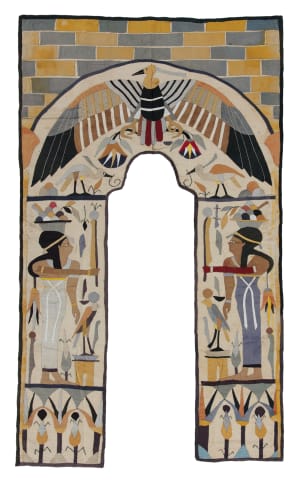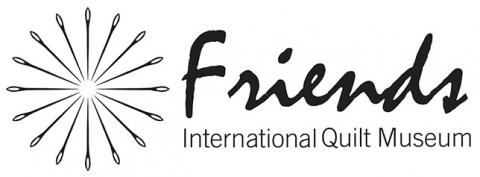Khayamiya (Tent Panel)
Khayamiya (Tent Panel)
Khayamiya (Tent Panel)
Made in Egypt
1925-1945
Cotton; hand appliqued
Gift of Holly Brackmann, IQM 2021.056.0001
Large and intricate appliqued tent panels have been an art form in Egypt at least since medieval times. Called "khayamiya," these panels have been made over the centuries by specially trained artisans for a variety of purposes: from massive tents for royal celebrations to small wall hangings for tourists.This panel is an example of a khayamiya made for tourists, a type of object that first appeared in the late nineteenth century but became particularly popular after the opening of Tutankhamun's tomb in 1922. Tourist panels often featured a jumble of pharaonic imagery--images inspired by ancient Egyptian hieroglyphics. This one prominently displays what appears to be a version of Nekhbet, the vulture goddess especially important to the rulers of Upper Egypt. It also takes the form of an archway, which echoes the shape of a mihrab, the prayer niche in mosques that face the holy city of Mecca.
This piece was donated by textile artist Holly Brackmann who acquired it from a colleague who had received it as a wedding gift in 1948 from a relative in Egypt. Knowing the provenance (history of creation and ownership) of a piece is important when acquiring new objects for the museum.
















